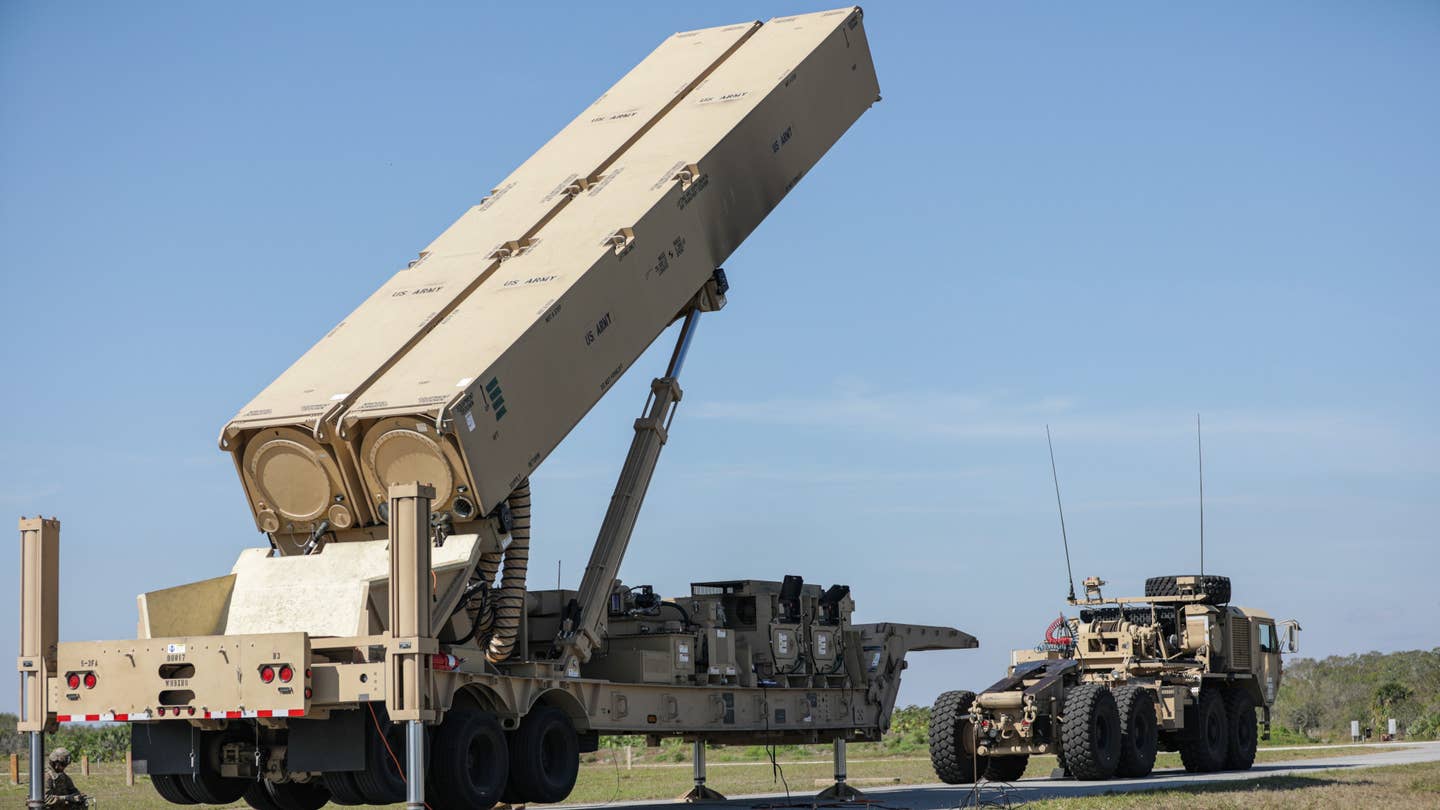Two Dark Eagle test launches have been abruptly cancelled this year, raising questions about its planned operational debut this year.

The Office of the Secretary of Defense (OSD) confirmed to The War Zone that the test had been aborted. We have also reached out to the Army for more information. Florida Today was the first to report on the cancellation of the launch.
“On Sept. 6, the Department planned to conduct a flight test at the Cape Canaveral Space Force Station, Florida, to inform our hypersonic technology development. As a result of pre-flight checks, the test did not occur,” an OSD spokesperson said in a statement. “The Department was able to successfully collect data on the performance of the ground hardware and software that will inform the continued progress toward fielding offensive hypersonic weapons. Delivering hypersonic weapons remains a top priority for the Department.”
A graphic giving a basic overview of the Army’s complete Dark Eagle weapon system. US Army
Today’s statement from OSD is essentially identical to one that it put out after the decision to scrub the first scheduled Dark Eagle test launch in March.
“On March 5, the Department of Defense planned to conduct a flight test from Cape Canaveral Space Force Station to inform the department’s hypersonic technology development,” OSD said at that time. “As a result of pre-flight checks, the test did not occur. Delivering hypersonic weapons remains a top priority for the Department of Defense.”
“Automated pre-flight checks identified that a battery did not activate, which resulted in not conducting the test,” Navy Vice Adm. Johnny Wolfe, that service’s Director for Strategic Sytems Programs, disclosed at a subsequent Congressional hearing. “We are aggressively investigating the cause of the no test and will continue to move forward with our development and additional testing in support of Army fielding as soon as the cause is identified and corrected.”
Though the U.S. military had previously declined to confirm it, there had been clear indications, including publicly available warning notices, that another Dark Eagle test was scheduled to occur sometime this week.
As noted, the Army is developing the ground-based Dark Eagle weapon system in cooperation with the Navy. The Navy plans to employ the same missiles, which it refers to as Intermediate-Range Conventional Prompt Strike (IRCPS) missiles, from its trio of Zumwalt class stealth destroyers and Block V Virginia class submarines.
A briefing slide from 2021 giving a general overview of the different components of the joint Army-Navy Dark Eagle/IRCPS program. USN
The Navy also conducted a test launch of an IRCPS missile last year from the Pacific Missile Range Facility at Barking Sands in Hawaii. That weapon “experienced an in-flight anomaly that prevented data collection for portions of the planned flight profile,” but “the Navy… determined the cause [and] implemented corrective actions,” according to the report from the Pentagon’s Office of Test and Evaluation, or DOT&E.
The Dark Eagle/IRCPS missile consists of two main components, a rocket booster and an unpowered hypersonic boost-glide vehicle payload on top. Hypersonic weapons of this type rely on the rocket booster to propel the boost-glide vehicle to an optimal speed and altitude, after which the latter component breaks away.
The boost-glide vehicle then independently travels to its target along a relatively shallow, atmospheric flight path at hypersonic speeds, which are defined as anything above Mach 5. Hypersonic vehicles of this type are designed to have a high degree of maneuverability, allowing them to change course erratically along the way. This all creates significant challenges for defenders, including just detecting the incoming threat, let alone trying to intercept it. It can also be especially difficult for opponents to react by trying to seek cover or move critical assets out of the target area.
A graphic providing a sense of the difference in flight path between a hypersonic boost-glide vehicle and a traditional ballistic missile, as well as a hypersonic cruise missile. GAO
The Army and the Navy have previously conducted multiple successful tests of the Common Hypersonic Glide Body (C-HGB) that sits atop the Dark Eagle/IRCPS missiles using test rockets that are different from the planned production booster configuration.
The two scrubbed tests this year, plus the issues with the one last year, raise significant questions about the immediate future of this joint Army-Navy program. As of 2022, five test launches were scheduled, in total, only two of which were intended to demonstrate the Army’s ground-launched Dark Eagle weapon system, according to DOT&E.
The Army had hoped to field an early operational capability with Dark Eagle before the end of this year, something that looks increasingly unlikely to happen. The Navy said last year that it was planning to begin testing IRCPS on the USS Zumwalt in 2025 and on a Block V Virginia class submarine in 2028.
An artist’s conception of a Zumwalt class destroyer firing an IRCPS missile. Lockheed Martin
The issues with Dark Eagle/IRCPS also notably come after the U.S. Air Force’s decision to cancel work a different air-launched hypersonic missile utilizing a boost-glide vehicle, called the AGM-183 Air-launched Rapid Response Weapon (ARRW). The service also abandoned plans to field an air-launched version of the Dark Eagle/IRCPS missile back in 2020. It has now decided to focus its attention on the development of an air-breathing hypersonic cruise missile.
Still, the Air Force has been finishing out its planned test schedule for the AGM-183 to help collect data that could be useful to other hypersonic projects. It declined to say whether or not the most recent ARRW test launch, which occurred last month, was a success or failure.
What the future now holds for Dark Eagle/IRCPS remains to be seen.
Howard Altman contributed to this story.



